Pickup trucks have been an enduring symbol of American automotive culture for over a century, evolving from utilitarian work vehicles to versatile lifestyle icons that appeal to a broad spectrum of drivers. The pickup truck market today is vast and diverse, reflecting a remarkable blend of rugged functionality, modern technology, and comfort.
From the demands of farmers, contractors, and tradespeople to families, outdoor enthusiasts, and even luxury seekers, pickups have adapted to serve multiple roles with increasing sophistication.
Their blend of capability and adaptability has made pickups the best-selling vehicle segment in the United States for decades, with millions sold annually and countless variants available nationwide.
This immense popularity has given rise to a wide spectrum of trucks, ranging from mass-produced workhorses with extensive dealer networks to ultra-rare, limited-edition models cherished by collectors and enthusiasts.
For prospective buyers, dealer availability is a critical factor. Being able to walk into a dealership and choose from a broad inventory means shorter wait times, more options, and often better pricing.
The five pickup trucks with the highest dealer availability across the country represent the backbone of the industry—models that are not only highly popular but also supported by efficient manufacturing and distribution networks.
These trucks, such as the Ford F-150, Chevrolet Silverado, and Ram 1500, are ubiquitous on roads and dealership lots alike. Their widespread presence reflects strategic production planning, robust supply chains, and consumer trust in their capability and value.
These trucks are designed to serve a wide array of customer needs, offering multiple trims, powertrains, and configurations to appeal to everyone from commercial users to weekend adventurers.
However, the world of pickups is not solely defined by volume and availability. Beyond the showroom floors lies a fascinating subculture of rare and collectible trucks that capture the imagination of enthusiasts and historians.
These pickups are often the result of unique collaborations, specialized uses, or limited production runs, making them extremely scarce and highly sought after.
Their rarity might stem from being built for a very specific purpose—like the GMC Railroad Crew Cab designed for railroad maintenance—or from bold performance experiments, such as the Shelby Dakota, a truck that married muscle car power with pickup practicality.
Others, like the Lincoln Blackwood, attempted to redefine what a luxury pickup could be, carving out niche places in automotive history despite limited commercial success.
These rare trucks are not just vehicles; they are storytelling artifacts. Each one tells a story about a moment in automotive innovation, market experimentation, or cultural trends. Collectors prize these vehicles not only for their scarcity but also for the narrative and craftsmanship behind them.
The Dodge Li’l Red Express, for example, is emblematic of an era when performance pickups briefly flourished, merging muscle car heritage with pickup truck styling in a way that has never quite been repeated. Meanwhile, the Dodge Rod Hall Signature Edition celebrates the spirit of off-road racing, encapsulating motorsport heritage in a street-legal package.
By exploring both ends of the spectrum—the trucks most readily available to buyers today and the rarest pickups treasured by collectors—we can appreciate the full breadth and depth of the pickup truck segment. This article offers readers an opportunity to understand the dynamics of availability that drive the mainstream market alongside the allure and mystique that rare pickups hold for enthusiasts.
Whether you are shopping for a dependable, widely available truck or dreaming of owning a piece of automotive history, understanding these categories provides a richer perspective on what pickups mean in American life. The story of pickups is one of adaptability, innovation, and cultural significance—a story that continues to evolve with each new model and every passionate collector who keeps the legacy alive.
Also Read: 5 Sedans With Highest Top Speeds And 5 With Governors
5 Pickup Trucks with the Highest Dealer Availability Nationwide

1. Ford F‑150
The Ford F‑150 stands as the undisputed king of American pickup trucks, and that dominance is reflected not only in annual sales but in sheer dealership presence. With over 55,000 units available nationwide—especially concentrated in states like Texas, Florida, and Michigan—it’s clear Ford is aggressively pushing supply to meet enduring demand.
Whether you’re looking for a basic workhorse or a top-trim luxury pickup, chances are high that a nearby dealership has exactly what you need, or close to it. High availability helps Ford meet demand from personal buyers, fleet operators, and municipalities alike.
One of the reasons the F‑150 enjoys such broad dealership availability is its trim versatility and factory volume. Ford produces the F‑150 at multiple plants across North America, including the Dearborn Truck Plant in Michigan and the Kansas City Assembly Plant in Missouri.
The broad production base means fast, scalable output of thousands of units per week. With trims like XL, XLT, Lariat, Platinum, King Ranch, and Raptor—and drivetrain options including hybrid and all-electric (via the Lightning model)—dealerships can cover nearly every buyer profile. As a result, it’s not just that F‑150s are common—it’s that nearly every kind of F‑150 is represented on the lot.
Another factor contributing to high availability is Ford’s aggressive inventory replenishment and strategic regional stocking. Ford trucks sell well in all 50 states, but the company customizes shipment volume by demand zones.
Southern and Western states, for instance, typically receive more off-road and 4WD models, while Midwest and Northeast markets may get better access to snow-capable trims or fleet-ready builds. This geographic alignment between inventory and buyer needs allows Ford dealers to reduce wait times and maintain customer satisfaction.
Lastly, the Ford F‑150 benefits from brand trust and national infrastructure. Ford has an enormous dealership network, with over 3,000 dealerships nationwide, many of which are heavily stocked with F‑150s. That nationwide distribution makes this truck easy to find, whether you’re in a big city or a rural town.
On top of that, Ford’s massive aftermarket and service ecosystem mean that owning an F‑150 remains practical over the long haul—another factor that makes it a go-to choice for buyers and dealerships alike. The F‑150’s high availability isn’t just a fluke—it’s a result of a carefully coordinated system designed to keep the crown securely in Ford’s hands.
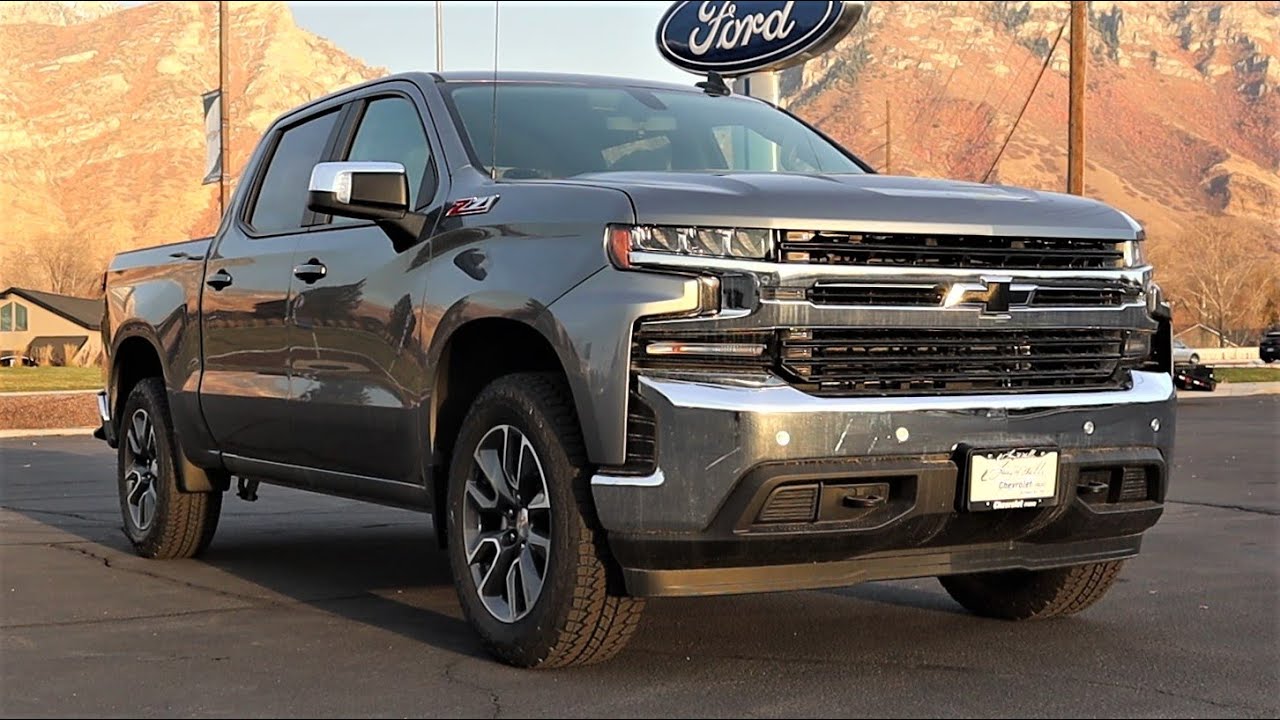
2. Chevrolet Silverado 1500
The Chevy Silverado 1500 is America’s second-best-selling full-size pickup and also ranks near the top in nationwide dealer availability. With an estimated 40,000+ units on dealership lots at any given time, it’s clear that Chevrolet prioritizes this model’s widespread distribution.
Like the F‑150, the Silverado appeals to a wide range of buyers—from small business owners and construction managers to families needing weekend utility. Its availability helps Chevrolet stay competitive against Ford and Ram by making sure a Silverado is never far from reach.
Production capacity is a major reason for the Silverado’s availability. Built primarily at GM’s Fort Wayne Assembly Plant in Indiana and the Silao Plant in Mexico, the Silverado benefits from high-volume manufacturing that keeps the supply chain moving.
GM is able to produce hundreds of thousands of Silverados annually, with build flexibility to accommodate multiple trims like WT (Work Truck), Custom, LT, Trail Boss, RST, LTZ, and High Country. This means that dealerships can keep a diverse portfolio of Silverados in stock—ranging from budget-conscious options to luxury-grade versions with leather interiors and advanced towing tech.
Chevrolet also leverages incentive-based regional strategies to ensure steady turnover at dealerships. In areas like the Midwest, where full-size pickups are a way of life, Chevy often rolls out promotional pricing and trade-in bonuses, leading to faster inventory movement and more frequent replenishment. Dealers there typically keep 50–100 units on the lot at any time.
Meanwhile, in coastal states, inventory levels may lean toward fuel-efficient configurations or ZR2 off-road variants to cater to weekend adventurers. Chevrolet’s flexible marketing and shipping strategies give it the ability to balance inventory and consumer needs across varying geographies.
Finally, the Silverado’s presence is supported by Chevrolet’s dealer network strength—with over 2,000 locations across the U.S. and robust financing partnerships. The Silverado remains a high-priority model for dealerships due to its relatively strong margins, trade-in appeal, and nameplate recognition.
Combined with loyal customer retention and consistently favorable reviews in performance and durability, it’s no surprise that dealerships are eager to keep their Silverado inventory high and varied. For buyers seeking choices, Chevy’s commitment to dealer-level availability makes the Silverado 1500 a staple option that’s rarely out of reach.
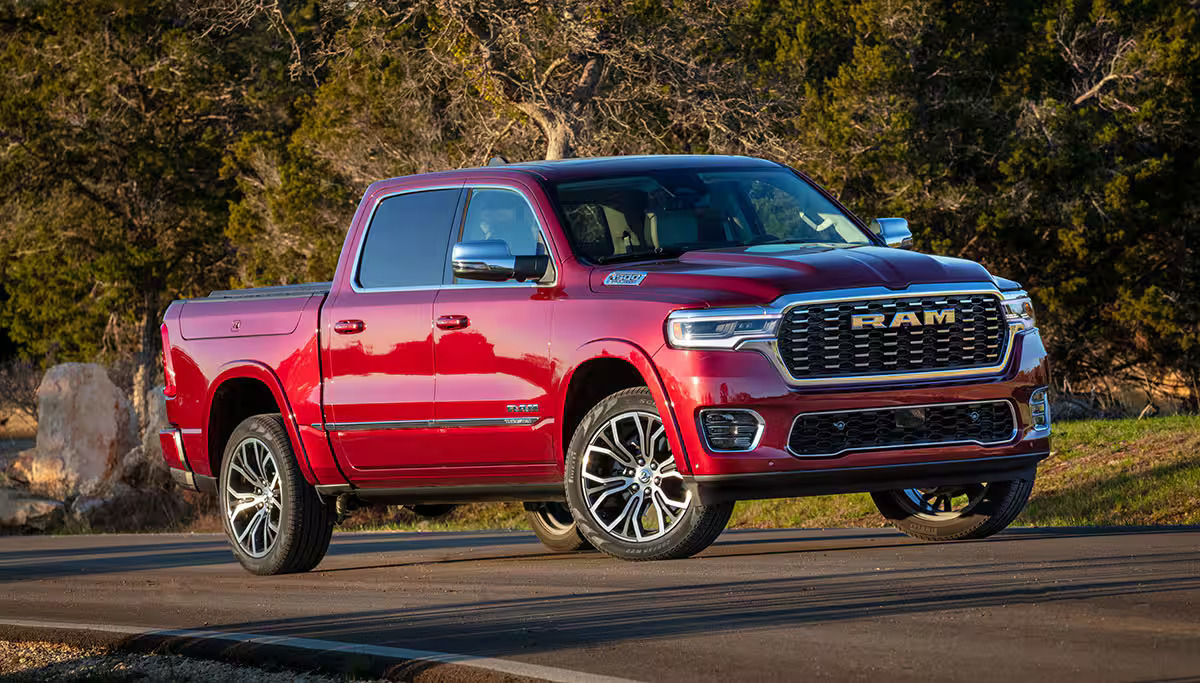
3. Ram 1500
The Ram 1500 holds a firm third place among full-size pickups in both sales and dealer availability. With over 26,000 units typically on dealer lots nationwide, the Ram 1500 continues to be a major player in the truck segment.
Its appeal has grown in recent years, thanks to design updates, interior refinement, and a marketing campaign that highlights both rugged capability and upscale comfort. Ram has carved out a niche that blends luxury and muscle, and the inventory numbers prove it’s working.
Ram’s production efficiency plays a key role in its dealership availability. Produced at Stellantis’ Sterling Heights Assembly Plant in Michigan, the Ram 1500 benefits from modern manufacturing systems and a high degree of platform flexibility.
Trims like the Tradesman, Big Horn, Rebel, Laramie, Limited, and TRX offer diverse appeal—from work-site warriors to performance enthusiasts. This multi-tiered approach ensures that dealerships can serve both the fleet and luxury markets without stretching their supply chains. It’s not uncommon to find dealerships that stock multiple trims side-by-side to meet various budgets and feature preferences.
In terms of regional distribution, Ram takes a market-specific approach to inventory delivery, with southern states receiving more off-road-oriented builds and northern states prioritizing models with advanced towing packages and cold-weather features.
This segmentation ensures trucks don’t sit on lots for too long and allows dealers to optimize for local preferences. Additionally, Ram’s partnership with regional upfitters and accessory providers makes it easy for buyers to customize their trucks, which enhances turnover and allows dealers to maintain higher inventory confidence.
Another factor contributing to Ram’s dealer visibility is its recent marketing focus on comfort and technology, particularly its Uconnect infotainment system, reclining rear seats, and segment-leading ride quality. These features have allowed Ram to carve out a niche as a “premium” pickup at competitive prices.
This evolving reputation has encouraged dealers to invest more heavily in Ram inventory, knowing that the product stands out in crowded lots. Combined with strategic incentives and aggressive financing options, the Ram 1500 is widely available—and often represents the most refined choice in its segment.
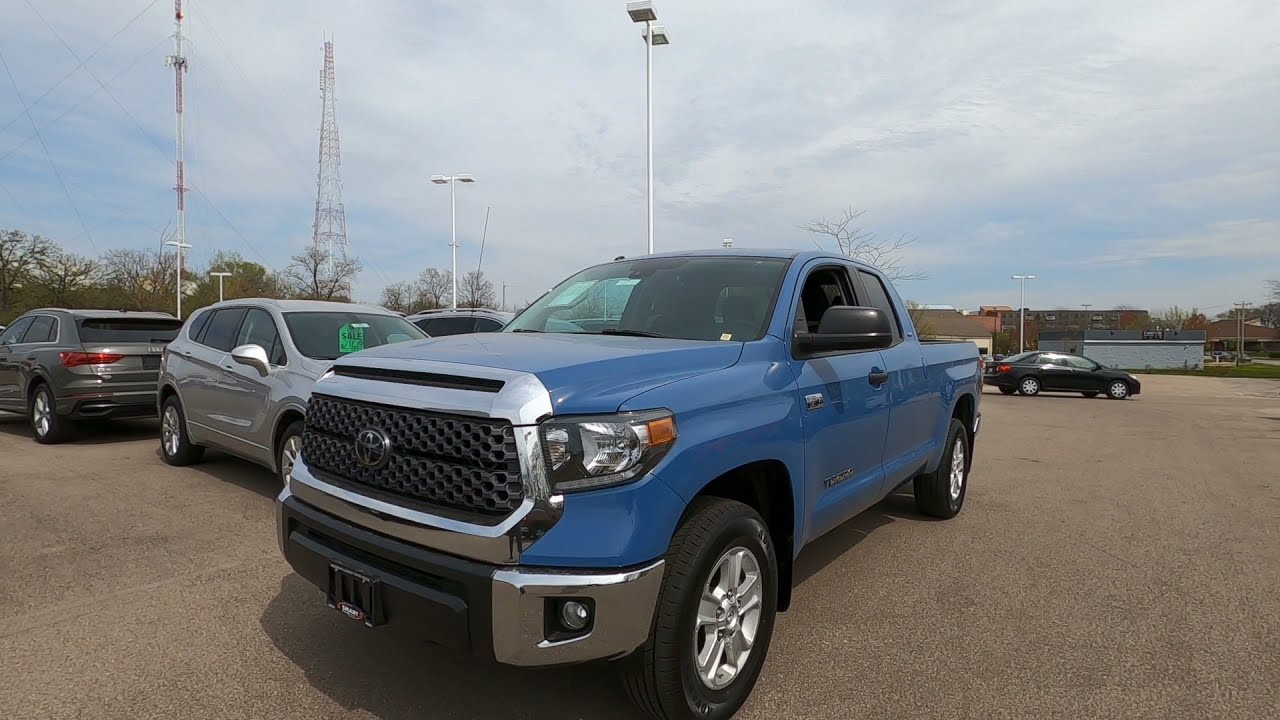
4. Toyota Tundra
While not as dominant in raw numbers as the Big Three, the Toyota Tundra still maintains solid dealership presence across the U.S., especially in the West Coast and Southern markets. With 13,000+ units available on lots, the Tundra benefits from Toyota’s reputation for reliability and its long-standing production presence in the U.S., primarily at its San Antonio, Texas plant.
Though the Tundra doesn’t crack the top-three in volume, its strategic availability gives it strong footing among import-brand loyalists who prefer Japanese engineering in a full-size frame.
The 2022 redesign of the Tundra introduced a new twin-turbocharged V6 engine and a hybrid i-FORCE MAX system, replacing the older V8. While some traditionalists were skeptical, these changes helped the Tundra meet evolving emissions standards while improving power and efficiency.
Toyota ensured that new models rolled out steadily to dealerships post-redesign, minimizing shortages and keeping dealer availability competitive. With trims like SR, SR5, Limited, Platinum, and TRD Pro, Toyota offers a strong trim mix tailored to various customer lifestyles, from off-roaders to weekend haulers.
Dealers often report that Toyota’s supply chain management allows for steady, if not massive, restocking. Toyota doesn’t flood the market like Ford or GM, but it ensures availability across its network in strategic volumes, particularly in areas with large truck-buying populations.
The result is a consistent but controlled dealership presence, which helps avoid overstock situations that can devalue the product or require deep discounts. This approach benefits both the consumer and the dealership, creating a sense of stability in an otherwise volatile segment.
Additionally, Toyota’s overall brand loyalty and quality perception play into its dealership strategy. Many buyers who previously owned Tacoma or Highlander models step up to the Tundra as a long-term investment. That trust allows Toyota dealerships to maintain moderate but highly desirable inventory, often preordered or quickly sold.
Toyota also focuses on ease of ownership, offering industry-leading warranties and scheduled maintenance plans that increase buyer confidence. The Tundra’s steady availability isn’t overwhelming, but it’s consistent and well-targeted—making it a quiet giant in dealer lots.
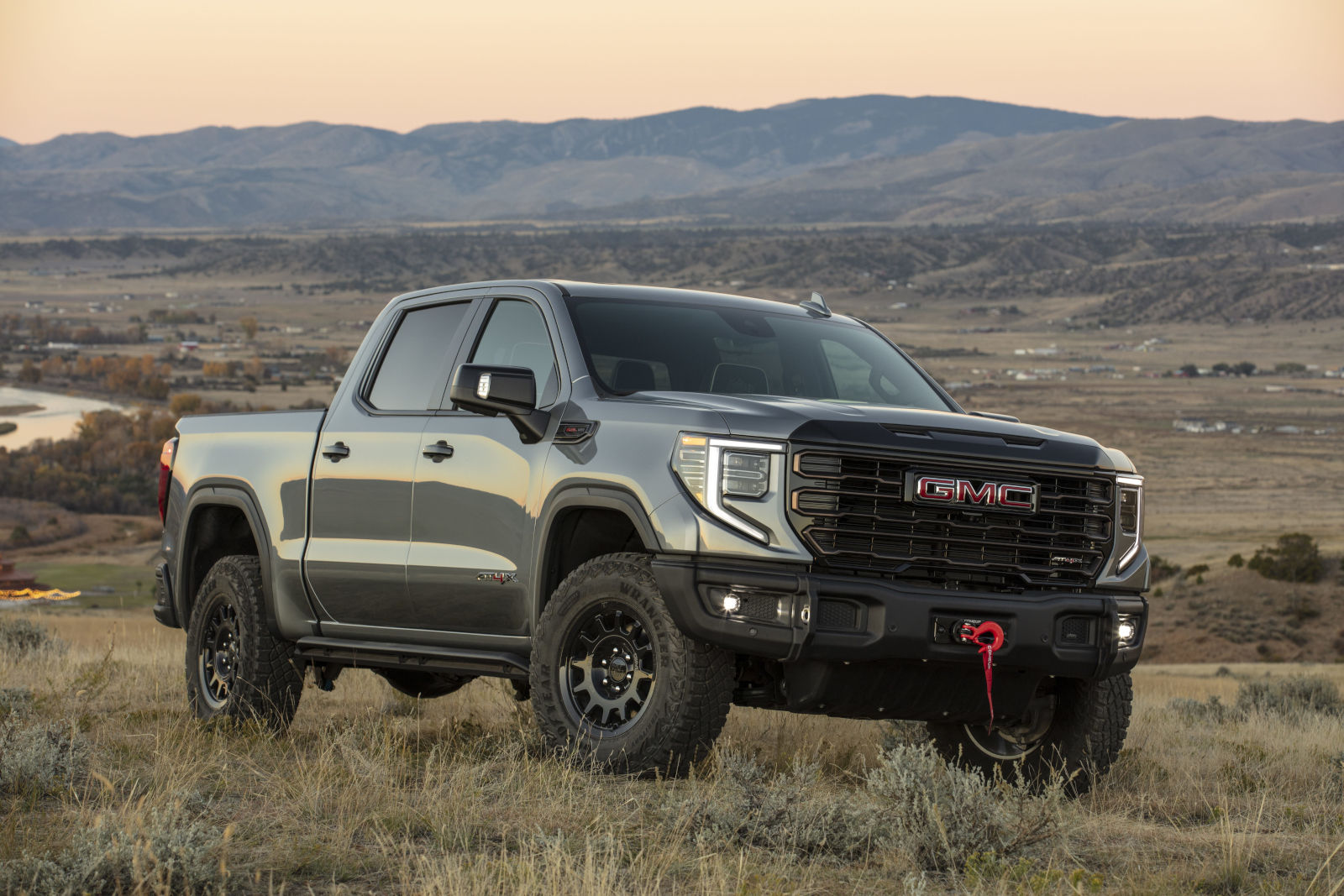
5. GMC Sierra 1500
The GMC Sierra 1500 operates in close partnership with the Silverado, and while it doesn’t always receive the same spotlight, it is typically available in similar volumes at GMC-affiliated dealerships. It’s not uncommon for larger dealerships to carry 30–70 Sierra units across trims, and its unique styling and premium appeal have carved out a loyal buyer base.
With the Sierra, GMC emphasizes a slightly more upscale image, offering luxury touches even in lower trims compared to its Chevy counterpart. This makes it a high-margin model that many dealers prioritize.
Production for the Sierra is shared with the Silverado, using GM’s same major manufacturing facilities in Indiana and Mexico. This allows Sierra to benefit from the same production scale and reliability that supports the Silverado’s availability.
The Sierra lineup includes the base model, SLE, Elevation, SLT, AT4, and the top-tier Denali and Denali Ultimate—trims that specifically target luxury truck buyers. Many dealers keep high trims in stock due to customer demand for comfort, tech, and towing capacity in one package.
The Sierra has gained significant traction in markets like Texas, Arizona, and the Mountain States, where customers look for pickups that combine performance with upscale aesthetics. GMC’s strategic trim marketing—especially with its AT4 off-road and Denali luxury branding—has positioned the Sierra as a more “refined rugged” option.
As such, inventory may not match the Silverado in raw numbers, but Sierra availability remains strong where it counts: in affluent and performance-minded pickup markets.
Finally, the Sierra benefits from GMC’s focused dealer ecosystem, which tends to invest more in high-profit, premium trims. While there are fewer GMC dealers than Chevrolet counterparts, the ones that exist often stock larger quantities of Sierra trucks than other GMC models.
Many GMC dealerships position the Sierra as their flagship offering, with consistent inventory restocks and showroom focus. For buyers who want the Silverado’s capability with a touch more class, the Sierra 1500 is readily available—and steadily rising in popularity.
5 Rarest Pickup Trucks Worth Collecting
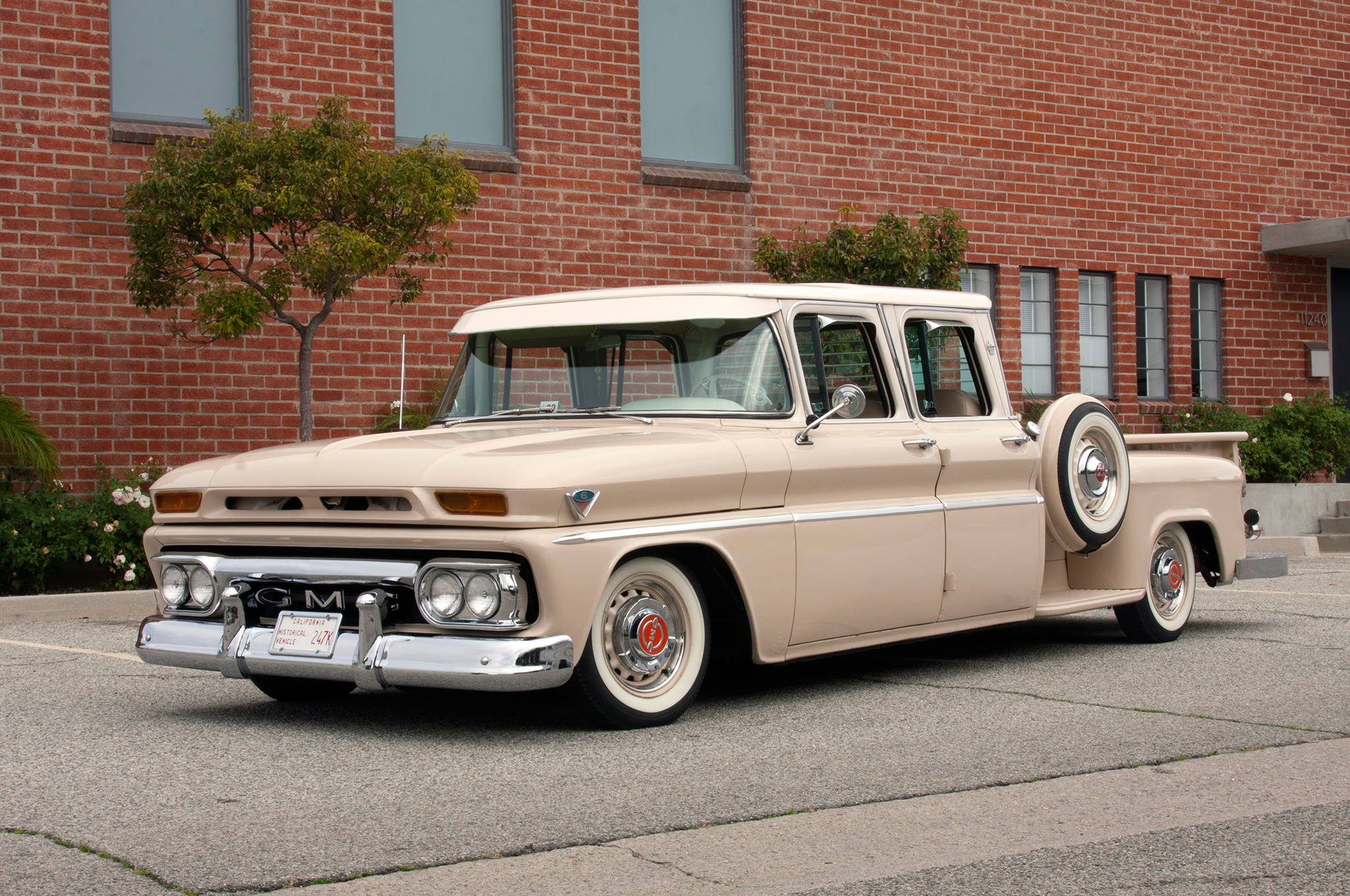
1. GMC Railroad Crew Cab (1962)
The 1962 GMC Railroad Crew Cab is arguably one of the rarest and most historically significant pickups ever made, with only six known units produced. Unlike typical pickups intended for everyday road use, these trucks were purpose-built as specialized work vehicles for railroad companies.
Their most distinctive feature is the addition of railroad wheels that allowed them to operate directly on train tracks, providing vital mobility to railroad crews for maintenance and inspection tasks. This rare configuration was essentially a hybrid between a truck and a maintenance-of-way vehicle, crafted with extreme specificity to industrial needs. Few vehicles can claim such a unique operational niche.
Manufactured through a collaboration between GMC and third-party coachbuilders, these trucks went beyond standard production line builds.
The coachbuilders installed the rail gear and customized interiors and exteriors to fit the grueling requirements of trackside work. As a result, these crew cabs look utilitarian but are remarkable examples of mid-century industrial engineering.
Their functional design sacrifices traditional comfort and style in favor of robustness and adaptability, making them a fascinating chapter in the evolution of work trucks. Today, these trucks are often found in museums or private collections dedicated to railroad and industrial history.
The rarity of the Railroad Crew Cab derives not just from its extremely limited production but also from the fact that many units were lost to the harsh environments in which they operated. Exposure to heavy wear, weather, and industrial hazards meant only a handful survived intact over the decades.
Because they were not designed for the consumer market, these trucks have never been subject to the typical restoration or enthusiast culture that preserved more mainstream models. Their industrial provenance makes them rare relics—prized by collectors who value authenticity and niche functionality over glamour.
Collectors interested in these trucks often emphasize their historical significance as specialized utility vehicles, representing a fascinating intersection of automotive and railroad technology. Due to their rarity, provenance, and the unique role they played, GMC Railroad Crew Cabs command premium prices and are considered crown jewels of industrial vehicle collections.
Their story highlights a lesser-known aspect of truck history, where vehicles were purpose-engineered for specific jobs rather than mass-market appeal. This rare pickup stands as a testament to an era when American manufacturers experimented with functional design tailored to heavy industries.
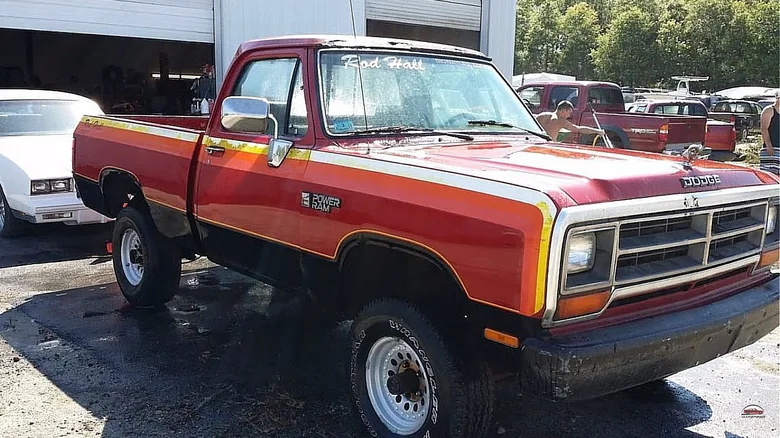
2. Dodge Rod Hall Signature Edition (1990)
The Dodge Rod Hall Signature Edition pickup is a gem in the off-road enthusiast community, especially among Baja racing fans. Produced in an extremely limited run of just 33 units, this edition pays homage to Rod Hall, one of the most legendary drivers in the grueling Baja 1000 desert race.
This special edition Dodge trucks were designed with high-performance components that directly reflected Hall’s racing pedigree, offering customers a street-legal truck with serious desert-racing DNA. This includes Rancho suspension shocks, performance tires, reinforced chassis components, and unique Rod Hall branding that made it instantly recognizable on and off the racecourse.
What makes this truck especially collectible is its direct lineage to motorsport heritage. Unlike mass-produced trucks that may dabble in off-road features, the Rod Hall Signature Edition was created as a tribute to a living legend and engineered to embody the spirit of competitive off-roading.
Each truck was outfitted with custom graphics, specialized wheels, upgraded suspension, and heavy-duty skid plates that were purpose-built to survive harsh desert terrain. The exclusivity and functional upgrades make this truck a rare specimen of factory-backed performance, bridging the gap between race-ready machines and consumer vehicles.
Due to the low production numbers, original Rod Hall Signature Edition pickups are extremely difficult to find today, and many of those that were sold have undergone significant modifications by their adventurous owners. Racing and off-road use often led to wear, damage, or parts replacement, reducing the number of pristine examples.
For collectors, finding a well-preserved or restored model represents a major coup and a highly sought-after piece of motorsport history. It appeals especially to enthusiasts who appreciate both off-road performance and the cultural lore of desert racing legends.
Beyond the technical and performance aspects, the Rod Hall Signature Edition captures a nostalgic era when factory-built performance trucks were rare, and the idea of a limited edition homage vehicle carried significant weight.
Its provenance as a “race-inspired” street truck is a narrative that resonates deeply with collectors, enhancing its value well beyond mere production numbers. As the Baja racing scene continues to grow in popularity, this truck’s status as a collectible icon is only expected to rise.

3. Shelby Dakota (1989)
The Shelby Dakota is a standout in the world of rare pickups because it represents a unique collaboration between Dodge and legendary automotive designer Carroll Shelby. Built in a short production run of just 1,500 units—860 in red and 540 in white—the Shelby Dakota was one of the first attempts to infuse a compact pickup truck with serious performance DNA.
Powered by a 5.2L V8 engine, the truck delivered muscle-car levels of power and acceleration packed into a more practical body style. This bold concept attracted enthusiasts looking for both utility and high performance in one package.
This truck was not simply a repurposed Dodge Dakota; it was meticulously upgraded with Shelby-specific features such as fiberglass fog lamps, Shelby-branded steering wheels, unique badging, and dashboard plaques to denote its exclusivity.
The Shelby Dakota’s sporty design cues and performance orientation made it a cult classic, as it stood apart from the standard pickup crowd by merging sportiness with utility. The truck was marketed to those who wanted the thrill of a muscle car in a more versatile format—an innovative concept that still resonates today.
Today, the Shelby Dakota is extremely collectible, partly because it was one of the earliest examples of a “performance pickup” and partly due to its association with Carroll Shelby’s legendary name. While the truck is rare, it also appeals to fans of Shelby’s other creations, such as the Cobra and Mustang variants.
Auction prices often reflect this pedigree, with well-maintained examples commanding premium values. It holds a special place in automotive history as a pioneer of the muscle-truck niche that would inspire future models across manufacturers.
Collectors prize the Shelby Dakota not only for its performance and exclusivity but also for the story it tells about late-1980s automotive innovation. At a time when pickups were primarily utilitarian, this truck pushed the boundaries by offering muscle-car performance in a pickup bed. This unique positioning has ensured its status as a coveted collectible for muscle car fans, truck enthusiasts, and Shelby aficionados alike.

4. Lincoln Blackwood (2002)
The Lincoln Blackwood represents one of the most fascinating and rare experiments in the pickup truck segment. Produced over a very short period from August 2001 to December 2002, Lincoln made only about 3,383 units of this luxury pickup, which was based heavily on the Ford F‑150 platform.
The Blackwood was an audacious attempt to fuse high-end luxury and pickup utility, featuring unique design elements such as a simulated hardwood bed liner with a tonneau cover, premium leather interiors, and exclusive Lincoln styling cues like chrome accents and distinct badging.
Lincoln targeted buyers looking for a “gentleman’s pickup”—a vehicle that combined upscale comfort with the practicality of a truck bed, though with a focus on urban sophistication rather than rugged utility.
The Blackwood was outfitted with a 300-horsepower 5.4L V8 engine and equipped with features more commonly found in luxury sedans and SUVs, such as premium audio systems, power-retractable tonneau covers, and wood-trimmed interiors. The concept was bold, but the market was not quite ready for a luxury pickup that sacrificed some traditional utility in favor of style.
Sales were disappointing due to its high price point (starting near $40,000 at launch) and limited cargo practicality—many customers balked at the bed design, which reduced hauling capability in favor of luxury finishes. Additionally, the Blackwood had no rear seats, limiting passenger capacity and alienating a segment of truck buyers.
Lincoln ended the model after just over a year, but the rarity of the Blackwood has made it a sought-after collector’s item among enthusiasts who appreciate its boldness and uniqueness.
Today, the Lincoln Blackwood is often considered a cult classic and a symbol of early 2000s luxury truck experimentation. Collectors value it for its rarity, the story behind its creation, and its unusual place in Lincoln’s lineage.
While not a performance truck or off-road beast, its rarity and distinctive blend of luxury and utility make it a unique piece of automotive history. Its scarcity ensures that pristine examples fetch respectable prices in the collector market.
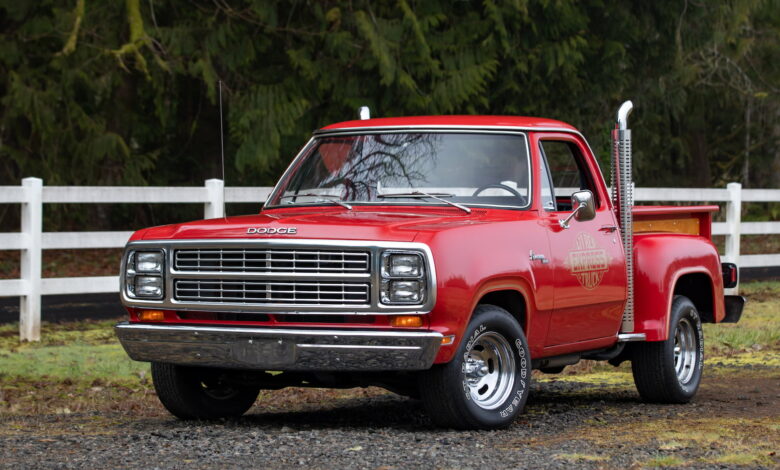
5. Dodge Li’l Red Express (1978–79)
The Dodge Li’l Red Express Truck occupies a special niche as one of the most iconic and rare muscle pickups of the late 1970s. With roughly 7,000 units produced over two model years, it was a standout “Adult Toy” truck, combining high performance with aggressive styling cues that included vertical exhaust stacks rising behind the cab, bright red paint, and bold graphics.
What set the Li’l Red Express apart was its powerful 360-cubic inch V8 engine paired with a police-package drivetrain, delivering more horsepower than most muscle cars of the era—an audacious feat during a time when many vehicles were being downsized due to emissions regulations.
The truck’s vertical exhaust stacks weren’t just aesthetic; they gave the Li’l Red Express a distinctive and intimidating look, and an unmistakable roar. Inside, it had simple but sporty trim, while the chassis and suspension were beefed up to handle spirited driving.
The truck’s combination of performance, style, and exclusivity made it highly desirable both when new and decades later. Despite its short production run, the Li’l Red Express became a cultural icon, symbolizing the end of the muscle car era with a unique truck-based expression.
Over the years, surviving Li’l Red Express trucks have become increasingly rare due to their specialized nature and the typical wear and tear from spirited use. Collectors prize original, well-maintained examples that preserve the truck’s aggressive looks and engine character.
Prices have steadily increased, with some restored models selling for over $30,000. Its status as a muscle truck pioneer and the relative scarcity of original, unmodified trucks have solidified its position among the rarest and most desirable pickups from the era.
Moreover, the Li’l Red Express serves as a reminder of an era when manufacturers took bold chances with niche market vehicles that blurred the lines between utility and performance. It represents the passion and creativity of the late ’70s automotive scene and continues to captivate collectors and enthusiasts who appreciate its unique blend of muscle car aggression and pickup truck practicality.
Also Read: Top 10 Long-Lasting Cars That Get Over 30 MPG
Pickup trucks stand as one of the most iconic and influential vehicle segments in the automotive world, embodying an enduring blend of rugged utility, broad versatility, and cultural significance. They are vehicles designed to meet the hard demands of work, yet they have also evolved into symbols of freedom, adventure, and personal expression.
In this context, examining the trucks with the highest dealer availability alongside the rarest and most collectible models reveals two sides of the pickup truck story—one of mass-market success and the other of niche historical importance.
The trucks that dominate dealer lots nationwide, such as the Ford F-150, Chevrolet Silverado, Ram 1500, Toyota Tundra, and GMC Sierra, exemplify the power of scale, reputation, and market understanding. These pickups are engineered and produced with precision to meet the diverse needs of millions of customers, offering a broad range of configurations, trims, and technological features.
Their widespread availability ensures that customers in nearly every corner of the country can access a vehicle tailored to their specific requirements, whether that be heavy towing capacity, off-road capability, fuel efficiency, or luxury appointments. Their mass production and efficient distribution reflect the culmination of decades of engineering refinement, supply chain optimization, and customer feedback.
The presence of these trucks in abundant quantities at dealerships is not merely a result of demand but also a testament to the manufacturers’ ability to align production capacity with market trends. This ensures that customers rarely face extended wait times or limited options, helping to maintain the trucks’ strong sales momentum.
The extensive dealer availability of these models also points to their critical role in supporting regional economies, particularly in rural and suburban areas where pickups are essential tools. Their ubiquity cements their place as the default choice for many Americans needing a dependable, capable vehicle for both work and recreation.
On the flip side, the rarest pickup trucks tell a different, more specialized story—one that is rich with innovation, cultural shifts, and market experimentation. Vehicles like the 1962 GMC Railroad Crew Cab, the Dodge Rod Hall Signature Edition, the Shelby Dakota, the Lincoln Blackwood, and the Dodge Li’l Red Express serve as living reminders of the creativity and risk-taking that have periodically disrupted the pickup market.
These trucks stand out for their scarcity, unique design elements, and the stories they carry about different periods and approaches in automotive history.
Collectors and enthusiasts prize these rare pickups not only for their limited numbers but for what they represent—moments when manufacturers pushed boundaries, whether through specialized industrial applications, performance enhancements, or luxury reimagining.
Their rarity often translates into high desirability and elevated market value, as they are seen as irreplaceable artifacts that preserve the spirit and evolution of the pickup truck. These trucks help illustrate that the pickup is more than a utilitarian vehicle; it is a canvas for identity, innovation, and heritage.
Together, the most available trucks and the rarest pickups provide a comprehensive view of the pickup truck’s enduring legacy. The high-volume models demonstrate the continued relevance and necessity of pickups in everyday life, while the rare trucks highlight the passion and creativity that keep the segment vibrant and interesting.
Whether a buyer is looking for a new workhorse fresh off the dealer lot or a collector hunting for a rare gem with a story to tell, both ends of the spectrum underscore the pickup truck’s unique place in automotive history.
The legacy of pickup trucks is not static—it is constantly being rewritten with each new generation, each innovation, and each collector who treasures the past.
By understanding the dynamics of availability and rarity, we gain a deeper appreciation for the pickup truck’s cultural resonance and the vital role it continues to play in shaping the way Americans drive, work, and express themselves. This ongoing story ensures that the pickup truck will remain an enduring and beloved icon for generations to come.
